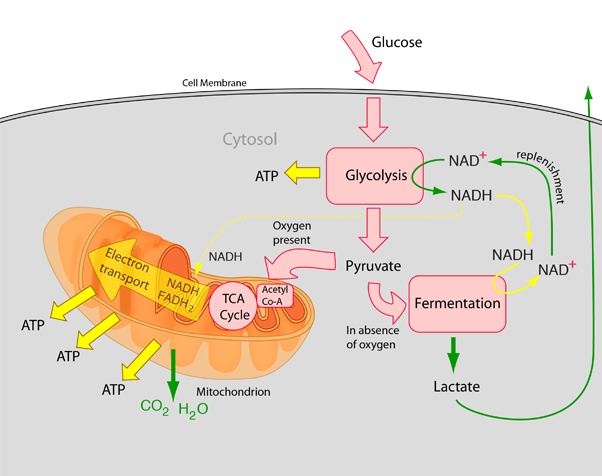What role does lactic acid fermentation play in cellular respiration?
1 Answer
To replenish the supply of NAD+, which can be reduced again through glycolysis to generate ATP.
Explanation:
Check out the diagram for cellular respiration as a whole:

As you can see, you actually generate a small amount of ATP through glycolysis, a process that does not need oxygen to take place. In addition to this, glycolysis also generates pyruvate (an organic compound) and reduces NAD+ to NADH.
In the presence of oxygen, the NADH now acts as an electron carrier, which progresses through aerobic respiration, where it generates the bulk of ATP.
If there's no oxygen available, however, then you automatically re-rout to lactic acid fermentation. In this process, the pyruvate is converted to lactic acid, and more importantly, the NADH is oxidized back into NAD+. This means that the NAD+ can be sent back to glycolysis, which allows for additional ATP generation. It's not a lot, but enough to keep you going for a bit.
As a side note, lactic acid accumulation causes irritation on the muscles. This is why sprinters (who's exercise doesn't allow them for a large intake of oxygen) often feel a soreness in their muscles after running. Inhaling oxygen helps clear out the lactic acid, which is also why it's important to breathe properly right after going on a run.


